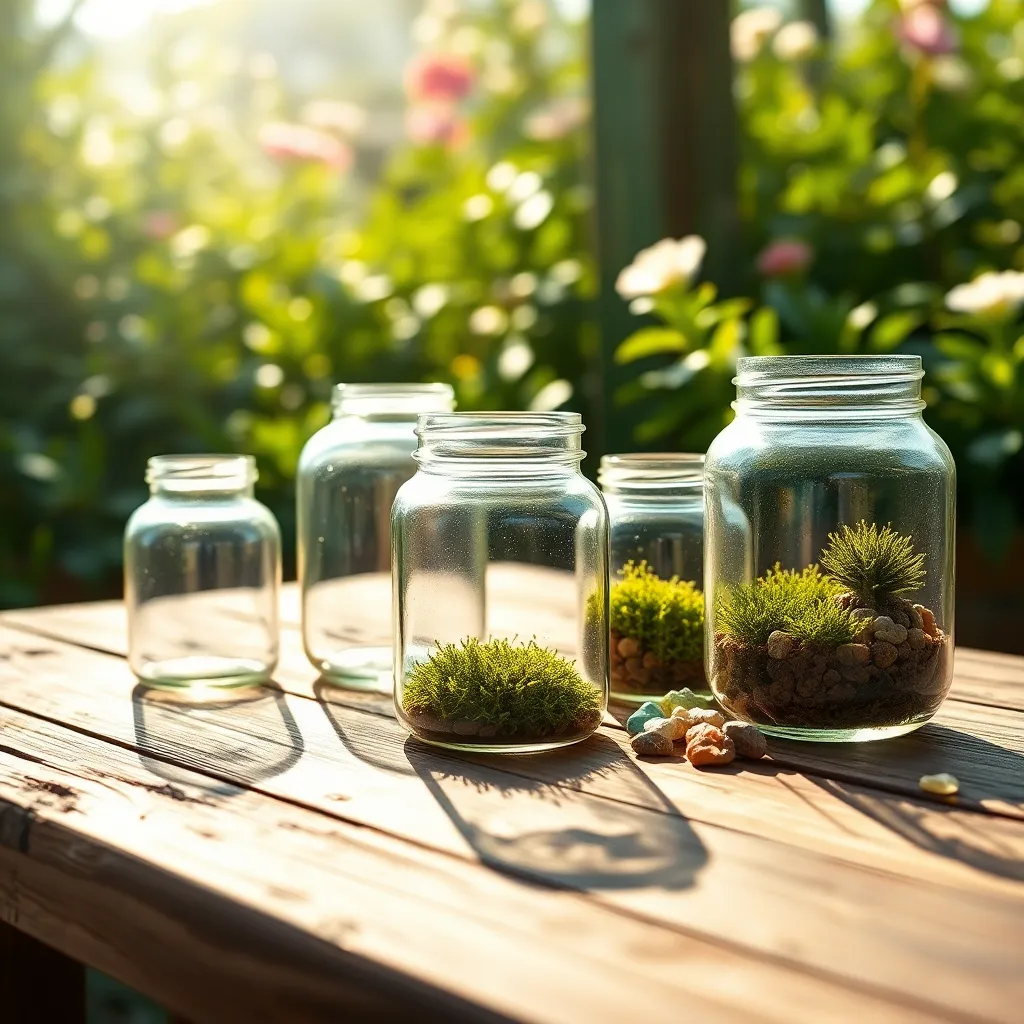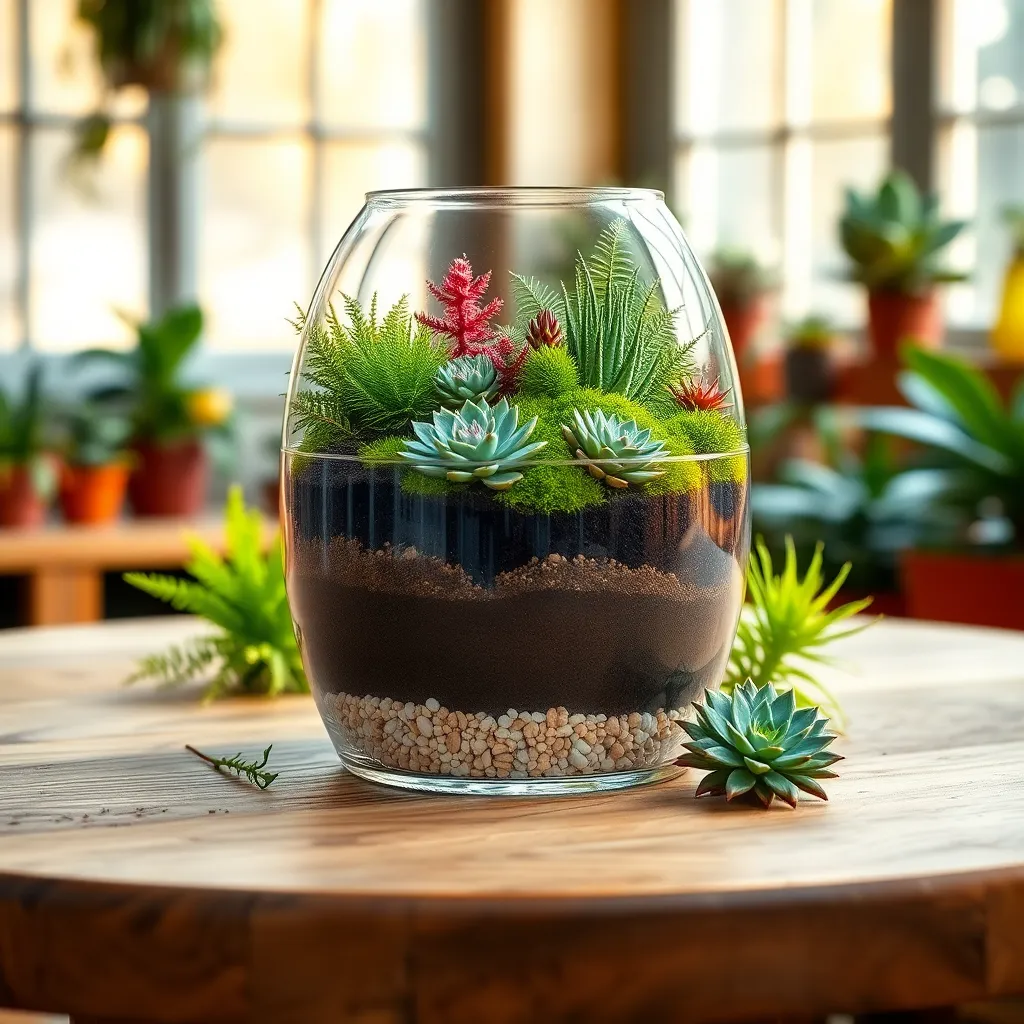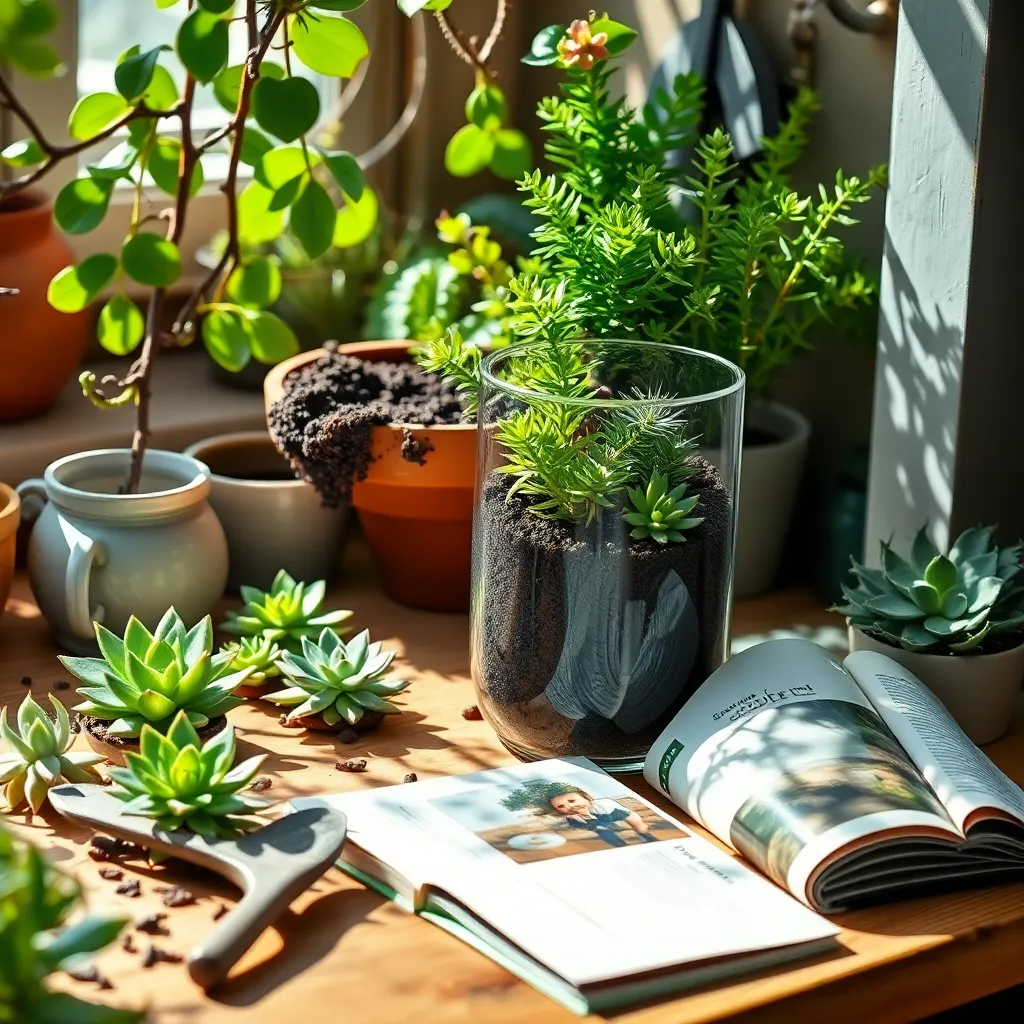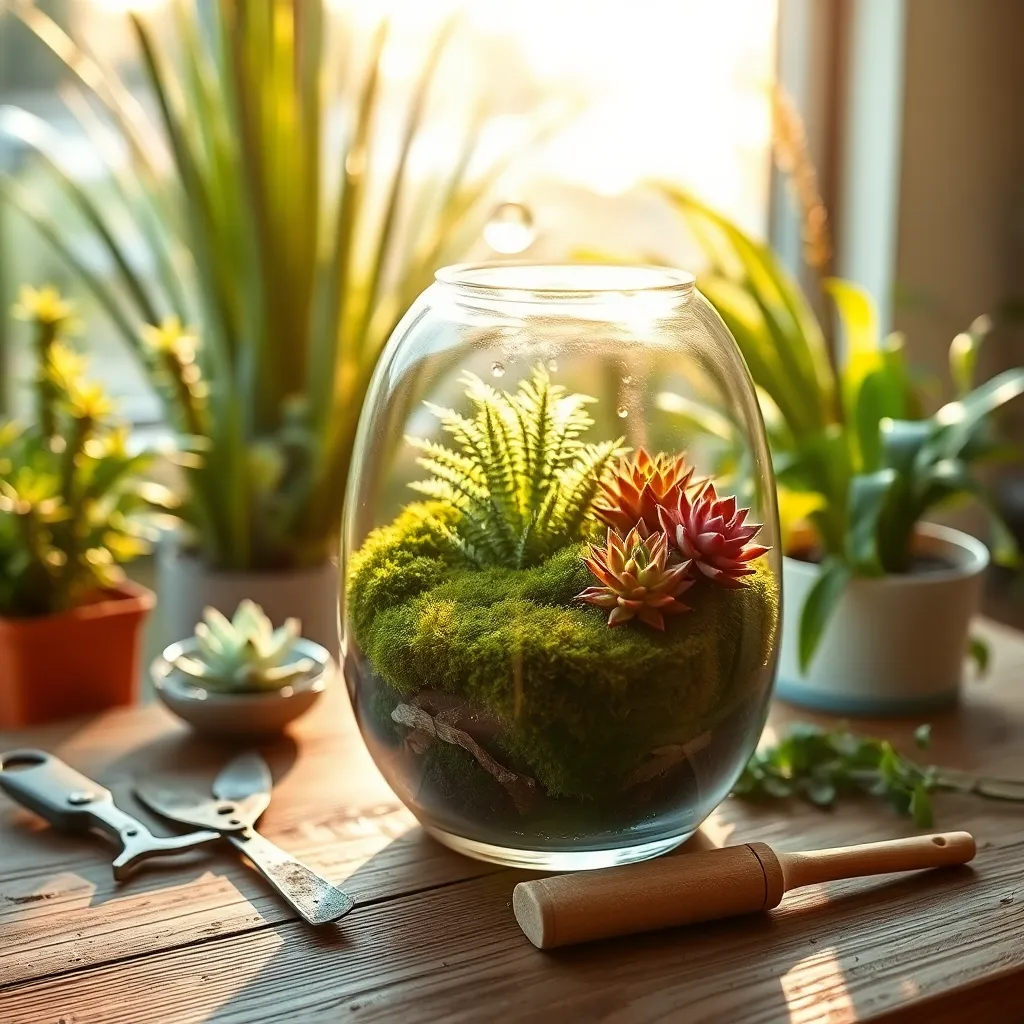Imagine having a miniature garden that thrives indoors, regardless of the season, and offers a sense of tranquility and nature’s beauty right in your living room. Creating your own DIY terrarium is not only a delightful project but also a gateway to understanding the delicate balance of ecosystems, making it a rewarding venture for both novice and seasoned gardeners. Whether you’re dipping your toes into the world of plants or you’re an experienced gardener looking for a new challenge, constructing a terrarium brings a touch of the outdoors inside, allowing you to cultivate a vibrant, living piece of art.
In this article, we’ll guide you through the enchanting process of building your personal terrarium, from selecting the right container and plants to crafting the perfect environment for growth. You’ll discover how to balance aesthetics and functionality, ensuring your terrarium not only looks beautiful but also flourishes over time. By the end of this journey, you’ll have the skills to create a thriving miniature ecosystem that reflects your personal style and brightens any space. So, gather your creative spirit and green thumb, and let’s embark on this exciting, transformative gardening adventure together!
Select a Suitable Container

Choosing the right container is essential for creating a thriving terrarium. Consider the size and type of plants you plan to include, as this will influence whether you need a container that is shallow or deep, narrow or wide.
Glass containers are the most popular choice because they allow maximum light penetration, which is crucial for plant photosynthesis. Keep in mind that the container should have an opening large enough to fit your hand, making it easier to plant and maintain the terrarium.
If you’re a beginner, start with a simple, open-top glass bowl or vase; these are easier to manage in terms of humidity and airflow. Advanced gardeners might opt for a closed container, like a jar with a lid, to create a self-sustaining ecosystem with its own microclimate.
Ensure the container is clean and free of any residues that could harm your plants. Before planting, you might also consider sterilizing the container with a mild bleach solution and rinsing it well to prevent mold growth.
Layer with Drainage Materials

After selecting a suitable container for your terrarium, it’s essential to focus on proper drainage to prevent waterlogging. Begin by adding a layer of coarse gravel or pebbles at the bottom of your container to facilitate water flow away from plant roots.
Next, consider placing a thin layer of activated charcoal on top of the gravel. This helps to filter the water and keep it fresh, reducing odors and preventing mold growth within the closed environment of a terrarium.
For a more advanced touch, some gardeners layer sphagnum moss over the charcoal. This moss acts as a barrier, preventing the potting soil from mixing with the charcoal and gravel, which can enhance the overall aesthetics and functionality of the terrarium.
When using these layers, ensure that each material is clean and free from contaminants. Rinse gravel and pebbles thoroughly and use horticultural-grade charcoal to avoid introducing unwanted chemicals into your terrarium.
Add Potting Soil Mix

Now that you’ve established a drainage layer, it’s time to add the potting soil mix to your terrarium. Choose a high-quality, well-draining potting mix, as this will provide the right balance of moisture and air for your plants. A mix specifically designed for indoor plants is ideal, as it often contains a blend of peat moss, vermiculite, and perlite.
Gently pour the potting soil mix over the drainage layer until it is about one-third of the terrarium’s height. Ensure the soil is level and slightly compacted to prevent future settling, but avoid packing it too tightly, as this can hinder root growth. For a more tailored approach, consider adding a small amount of charcoal to the soil mix to help with odor control and moisture regulation.
When adding plants, make sure to create small indentations in the soil to accommodate their roots comfortably. Place plants with similar light and water requirements together to ensure they thrive in their shared environment. For an advanced touch, consider layering different types of soil if you plan to include both succulents and tropical plants, as each has distinct soil needs.
If you’re working with a closed terrarium, remember to choose plants that can tolerate higher humidity. Plants like ferns, mosses, and fittonias are excellent choices for such conditions. Alternatively, if your terrarium is open, select plants such as succulents or air plants, which prefer drier environments. Water your terrarium sparingly to prevent over-saturation, and adjust the frequency based on the types of plants used and the terrarium’s exposure to sunlight.
Position Plants Creatively

Once you’ve added the potting soil mix, it’s time to position your plants creatively within the terrarium. Consider the height and spread of each plant so that you create an aesthetically pleasing arrangement that mimics a natural landscape.
Start by placing taller plants towards the back or center of the terrarium. This approach gives depth and allows smaller plants to receive adequate light and room to thrive.
When arranging plants, use contrasting colors and textures to enhance visual interest. Pair leafy green plants with those that have colorful foliage or unique shapes for an eye-catching display.
For beginners, choosing a variety of hardy plants like ferns, mosses, and succulents can ensure success. These plants typically require less maintenance and are more forgiving in terms of light and moisture conditions.
Advanced gardeners might experiment with incorporating more delicate species that require specific humidity levels or light conditions. Be sure to research each plant’s needs and adjust your terrarium’s environment accordingly to support healthy growth.
After positioning your plants, gently press down the soil around each root ball to secure them in place. This step is crucial to prevent plants from shifting and ensures they can establish strong root systems.
Decorate and Water Sparingly

When decorating your terrarium, consider adding elements like stones, moss, or small figurines to enhance its visual appeal. These decorative items not only add character but also help anchor your plants, creating a more stable environment.
Choose decorations that are water-resistant and inert to avoid altering the terrarium’s ecosystem. Natural materials like pebbles and river rocks are excellent choices as they help maintain humidity without affecting the soil’s chemistry.
For a touch of sophistication, layer materials like colored sand or fine gravel for a decorative base. This not only provides a visually appealing look but also aids in drainage, which is crucial for plant health.
When it comes to watering, it’s vital to remember that a terrarium is a self-sustaining environment that requires minimal moisture. Overwatering is a common mistake; instead, mist the plants lightly with a spray bottle every couple of weeks.
To gauge if your terrarium needs water, monitor the condensation on the glass—if it’s present, hold off on watering. This method ensures that your plants receive adequate moisture without the risk of root rot.
Advanced gardeners can use a moisture meter to precisely measure the soil’s moisture level. This tool is particularly useful if you’re working with a closed terrarium, where conditions can be more challenging to assess visually.
Conclusion: Growing Success with These Plants
In conclusion, creating your own DIY terrarium offers not just a delightful craft experience but also valuable insights into nurturing relationships. By focusing on the five key concepts—communication in choosing the right plants, patience in allowing growth, adaptability in dealing with changes, mutual support in maintaining the ecosystem, and celebration of every little success—you can cultivate a thriving relationship environment. As an actionable next step, why not gather your partner or loved one and start planning your terrarium project today? Not only will it be a fun activity, but it will also serve as a gentle reminder of the care needed to keep relationships flourishing.
Remember, relationships, like terrariums, require ongoing attention and love. Be sure to bookmark this article for when you need a refresher, as it will guide you in maintaining the balance and beauty in your connections. By nurturing these elements, you’ll step confidently into a future filled with successful and fulfilling relationships. Together, let’s embark on this journey of growth, understanding, and shared joy. Save this article as your roadmap to relationship success—it’s a treasure worth revisiting!
